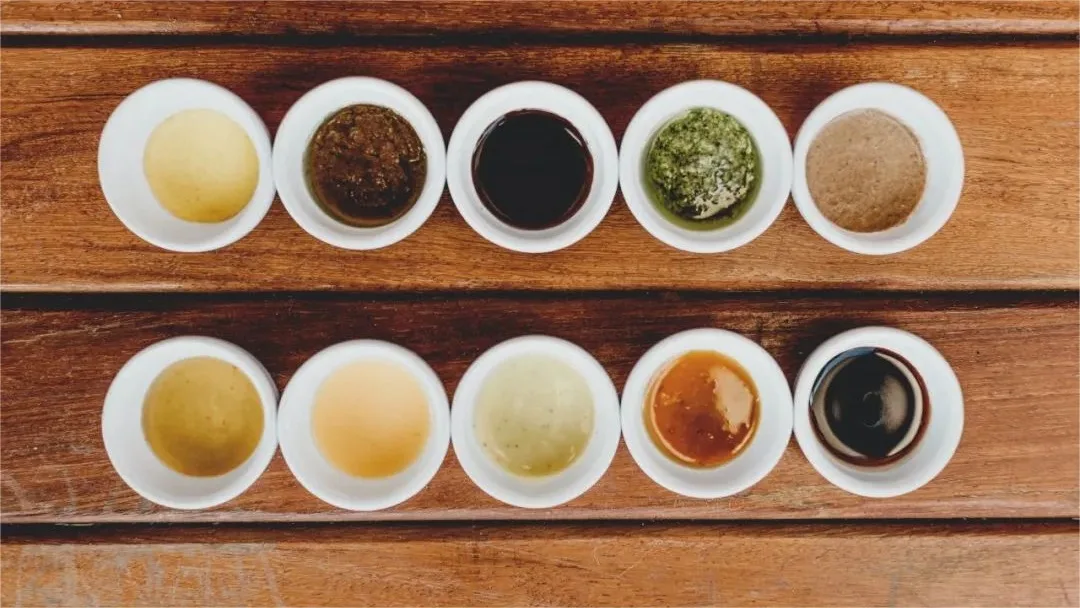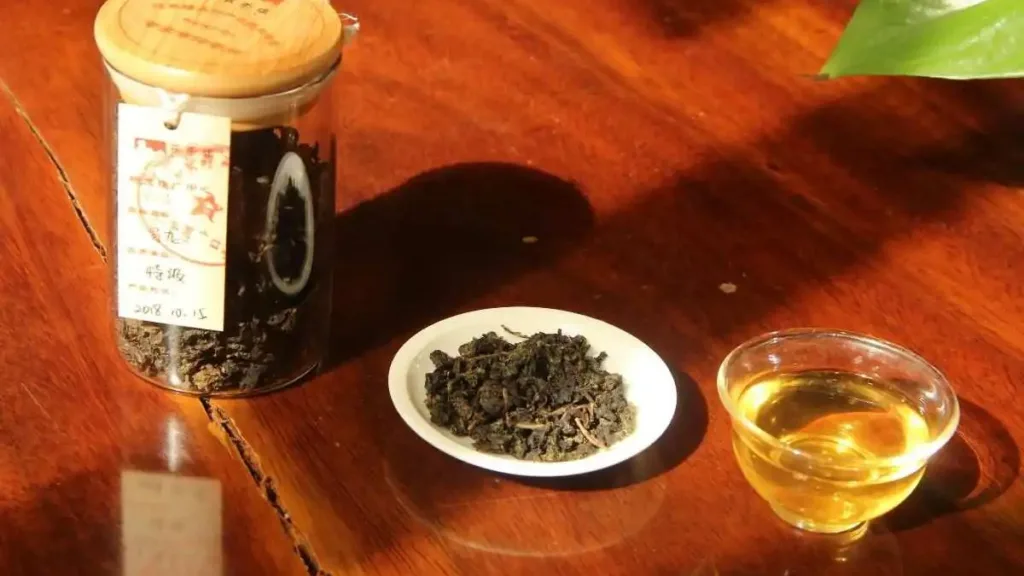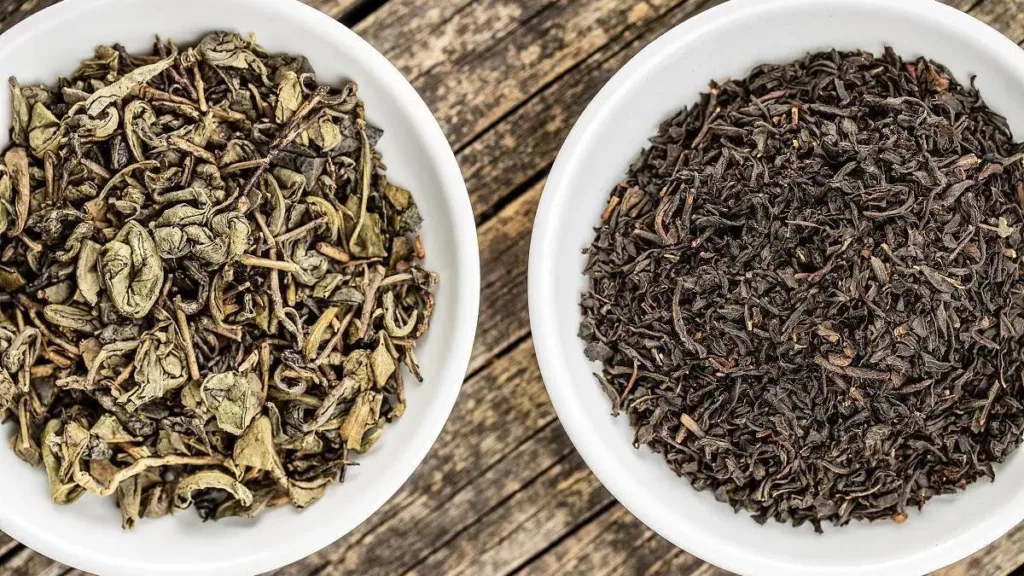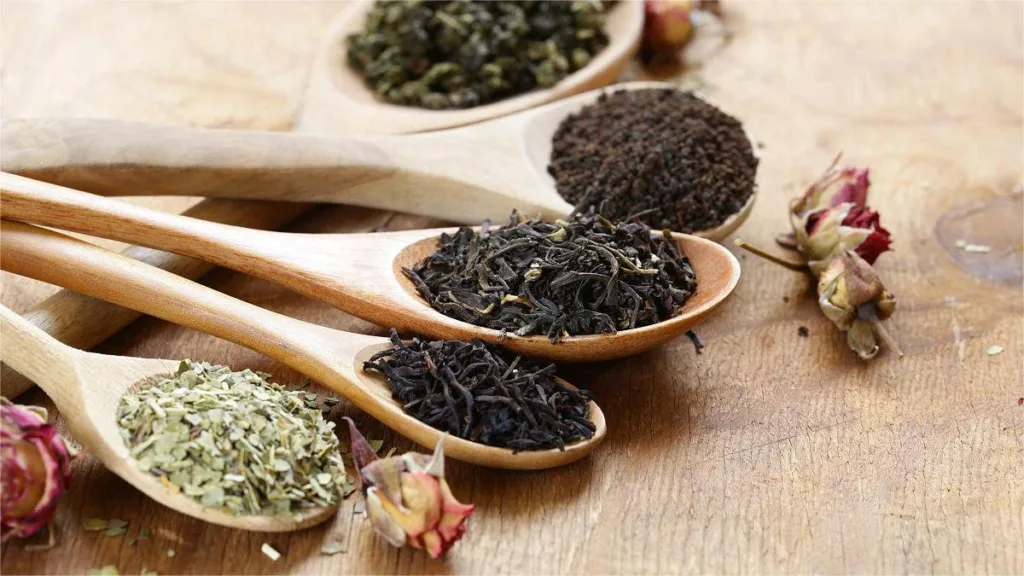Chinese tea is renowned for its rich variety and diverse classifications, with six major categories primarily recognized based on the color and processing methods of the tea leaves: black tea, green tea, oolong tea, yellow tea, dark tea, and white tea. Each of these tea types has distinct characteristics, offering a wide range of flavors, aromas, and health benefits. Let’s explore these six major categories in greater detail.
1. Black Tea (红茶)
- Tea Type: Fully Fermented
- Characteristics: Named for its red dry leaves, red liquor, and red tea leaves after brewing.
- Black tea is made from the new buds and leaves of tea plants suitable for this purpose. It undergoes withering, rolling, fermentation, and drying, which are typical processing steps. During processing, chemical reactions centered around tea polyphenol enzymes and oxidation take place, resulting in a significant transformation of the chemical composition of the fresh leaves. Tea polyphenols decrease by over 90%, giving rise to new compounds such as theaflavins and thearubigins. Aromatic substances become more pronounced, making black tea stand out for its reddish appearance, red infusion, red leaves, and a robust, sweet flavor. Some famous Chinese black teas include Keemun black tea, Zhenghe Gongfu, Min Hong Gongfu, Tanzhong Gongfu, Dianhong Gongfu, Jiulong Hongmei, Ning Hong Gongfu, and Yihong Gongfu. Among them, Keemun black tea is the most renowned and is the second-largest tea category in China.
2. Green Tea (绿茶)
- Tea Type: Unfermented
- Characteristics: The dry leaves, brewed tea, and tea leaves all feature a dominant green color.
- Green tea is one of the major tea categories in China. It is made from the new leaves or buds of tea plants, without undergoing fermentation. The processing steps typically include killing the green, shaping, and drying. The final product retains the fresh green appearance of the tea leaves, preserving natural compounds like tea polyphenols and caffeine. Green tea is associated with various health benefits, including cancer prevention, cholesterol reduction, weight loss, and protection against the harmful effects of nicotine for smokers. Notable Chinese green teas include West Lake Dragon Well, Dongting Bi Luo Chun, Huangshan Maofeng, Xinyang Maojian, Lushan Yunwu, Liuan Guapian, and Taiping Houkui.
3. Oolong Tea (乌龙茶)
- Tea Type: Semi-fermented
- Characteristics: Oolong tea is a unique and diverse category of Chinese tea with various varieties.
- Oolong tea, also known as Qingcha (青茶), is produced through a series of steps, including plucking, withering, shaking, frying, rolling, and roasting. It offers excellent quality with a fragrant aroma, a fresh and sweet taste, and a lingering aftertaste. Notable oolong teas in China include Anxi Tieguanyin, Fenghuang Shuixian, Dongfang Meiren, Wuyi Rock Tea, Luohan Chenxiang, Wulong Hongcha, and Hong Wulong.
4. Yellow Tea (黄茶)
- Tea Type: Lightly Fermented
- Characteristics: Yellow tea is unique to China, with various subtypes based on the size and quality of tea buds and leaves.
- Yellow tea is characterized by a mild fermentation process. It is categorized into Huangya tea (yellow bud tea), Huangxiao tea (small yellow tea), and Huangda tea (large yellow tea) based on the size of the fresh tea buds and leaves used. Notable examples include Junshan Yinzhen, Mengding Huangya, Huoshan Huangya, Yuan’an Yellow Tea, Wuzhishan Maofeng, Pingyang Yellow Soup, and Ya’an Yellow Tea. The construction of the Three Gorges Reservoir in the Ziguishan area created a unique microclimate, giving rise to Ziguixiao, a distinctive yellow tea.
5. Dark Tea (黑茶)
- Tea Type: Post-fermented
- Characteristics: Dark tea gets its name from its black appearance in the final product.
- Dark tea is one of the six major tea categories and falls under the post-fermented category. Major production areas include Sichuan, Yunnan, Hubei, Hunan, Shaanxi, Anhui, and more. Traditional dark tea primarily uses mature leaves for producing compressed tea. The dark tea category encompasses a wide range of subtypes with varying fermentation levels. Some well-known dark teas include Pu-erh tea, Anhua dark tea, and Fuzhuan dark tea.
6. White Tea (白茶)
- Tea Type: Lightly Fermented
- Characteristics: White tea is a traditional Chinese tea known for its unique qualities.
- White tea is a lightly fermented tea and holds a special place in the world of Chinese tea. It is one of the six major tea categories, known for its distinctive appearance, fragrant aroma, pale yellow-green infusion, and delicate, refreshing flavor. White tea is often made from tea buds, which are covered in fine white hairs, giving the tea its name. Some famous white teas include Silver Needle (Yinzhen), White Peony (Bai Mudan), and Shou Mei.
These six major categories of Chinese tea offer a wide range of flavors, aromas, and health benefits, reflecting the rich tea culture and traditions of China. Each type has its unique processing methods, flavors, and regional specialties, making Chinese tea a diverse and fascinating world to explore for tea enthusiasts around the globe.



